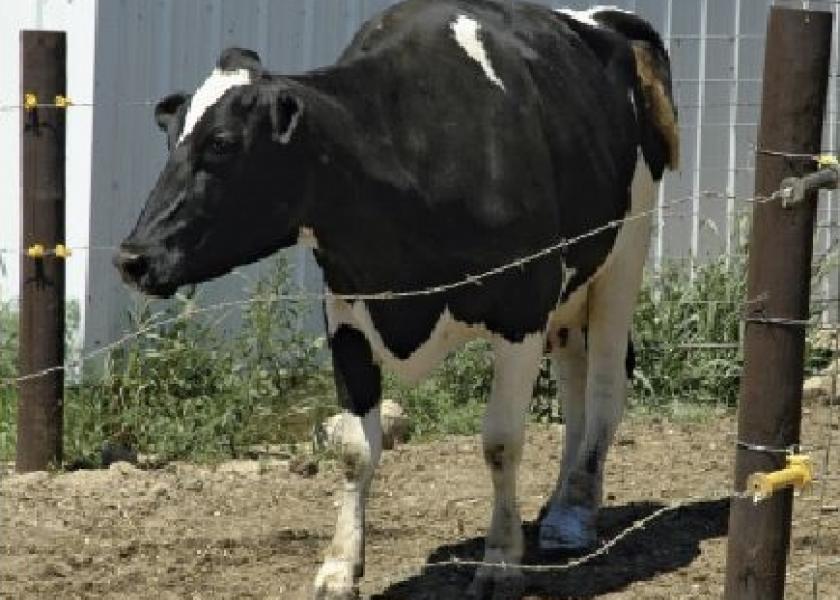Lameness Is Preventable

Integrate lameness diagnosis into your weekly management routine
As much as dairy farmers hate to admit it, lameness is an on-going problem on most farms.
Recent estimates of herds from California to Ontario show lameness prevalence ranges from a fourth to a third of all cows.
“It’s important to identify lame cows early and then treat them,” says Gerard Cramer, a University of
 Bonus Content Bonus Content |
| More on Lameness assessment and prevention |
Minnesota veterinarian specializing in hoof health. Lame cows eat less feed, produce less milk, rebreed less often and are culled more frequently as a result. In addition, lameness is a welfare issue that causes undo suffering.
The good news? “With the proper identification and treatment protocols, it’s possible to cut lameness in half,” Cramer says.
The first step is to find lame cows early. All cows should be routinely checked and scored for mobility. The best way is to watch cows walk and look for signs of lameness. If a cow is lame, have protocols in place to act
immediately. A simple hoof trim might correct the problem. Or it might at least identify what the problems are and suggest what other corrective actions need to be taken, Cramer says.
Generally, lameness is caused by digital dermatitis (often hairy heel warts) or hoof horn lesions caused by sole ulcers or white line disease.
The key is to determine which of these is the primary cause of lameness in your herd. “Focus on the big picture first, starting with lesion data,” Cramer says.
Then, take an integrated approach by working with your hoof trimmer, nutritionist and veterinarian, he says.
If infectious heel warts are your primary problem, sanitation will be critical. Time alley scraping for when cows are away being milked or are least active. That’s not always easy to do, especially with mechanical alley scrapers, but it is critical to keeping hooves clean and dry.
Foot baths are also critical and should be thought of as a prevention tool. If heel warts are a problem in your herd, baths should be used daily.
But don’t expect food baths to cure heel warts. “Using footbaths as a treatment for heel warts is like
using a teat dip on a cow with mastitis,” Cramer says.
Cow comfort is critical to lameness prevention. Studies show that cows need to rest 12 hours per day in stalls with deep, soft, dry beds.
Flooring should be designed to minimize slips and allow cows to catch themselves quickly when they do slip. Rubber mats or belting can provide cushion so long as they do not become slippery when wet.
Nutrition is also key, particularly through the transition period. Trace minerals, such as copper and zinc, play important roles in keratin formation and hoof horn quality.
“But they are not a cure-all and take time to show effect,” Cramer says. “You need to feed these trace minerals through the dry period. Biotin, for example, takes six months to increase hoof hardness.”







